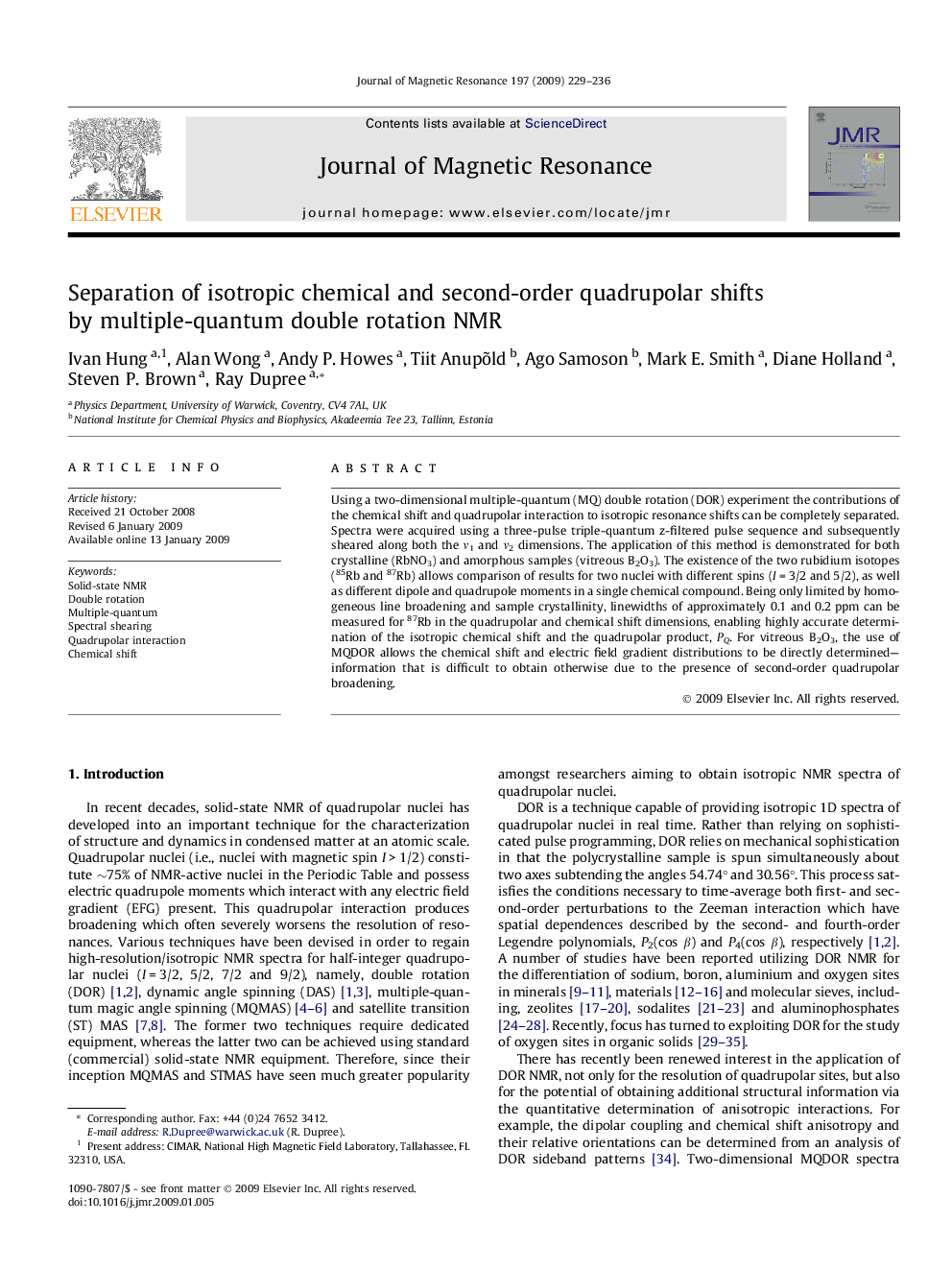| Article ID | Journal | Published Year | Pages | File Type |
|---|---|---|---|---|
| 5406947 | Journal of Magnetic Resonance | 2009 | 8 Pages |
Abstract
Using a two-dimensional multiple-quantum (MQ) double rotation (DOR) experiment the contributions of the chemical shift and quadrupolar interaction to isotropic resonance shifts can be completely separated. Spectra were acquired using a three-pulse triple-quantum z-filtered pulse sequence and subsequently sheared along both the ν1 and ν2 dimensions. The application of this method is demonstrated for both crystalline (RbNO3) and amorphous samples (vitreous B2O3). The existence of the two rubidium isotopes (85Rb and 87Rb) allows comparison of results for two nuclei with different spins (I = 3/2 and 5/2), as well as different dipole and quadrupole moments in a single chemical compound. Being only limited by homogeneous line broadening and sample crystallinity, linewidths of approximately 0.1 and 0.2 ppm can be measured for 87Rb in the quadrupolar and chemical shift dimensions, enabling highly accurate determination of the isotropic chemical shift and the quadrupolar product, PQ. For vitreous B2O3, the use of MQDOR allows the chemical shift and electric field gradient distributions to be directly determined-information that is difficult to obtain otherwise due to the presence of second-order quadrupolar broadening.
Related Topics
Physical Sciences and Engineering
Chemistry
Physical and Theoretical Chemistry
Authors
Ivan Hung, Alan Wong, Andy P. Howes, Tiit Anupõld, Ago Samoson, Mark E. Smith, Diane Holland, Steven P. Brown, Ray Dupree,
